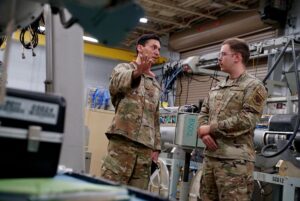
Rep. Don Bacon (R-Neb.), the co-chairman of the House Electronic Warfare Working Group and a member of the House Armed Services Committee, said on July 18 that he is disappointed that the House's version of the fiscal 2024 defense authorization bill did not make progress on electronic warfare (EW). “We did not get much done...when it comes to electromagnetic spectrum operations,” Bacon, a retired U.S. Air Force brigadier general and EC-130H commander, told a Hudson Institute virtual forum on July…














